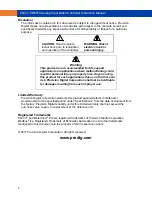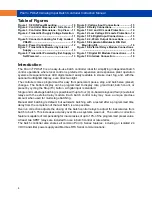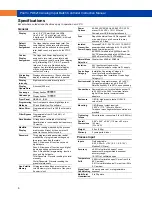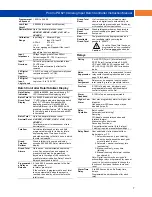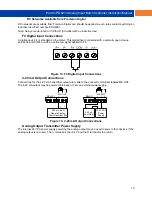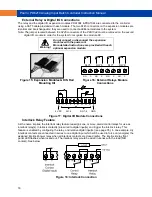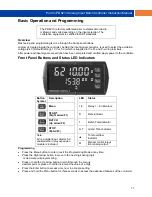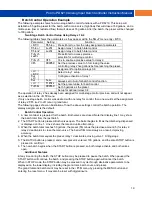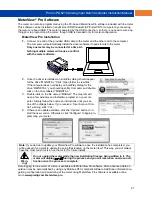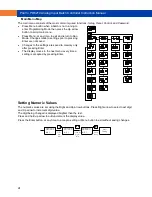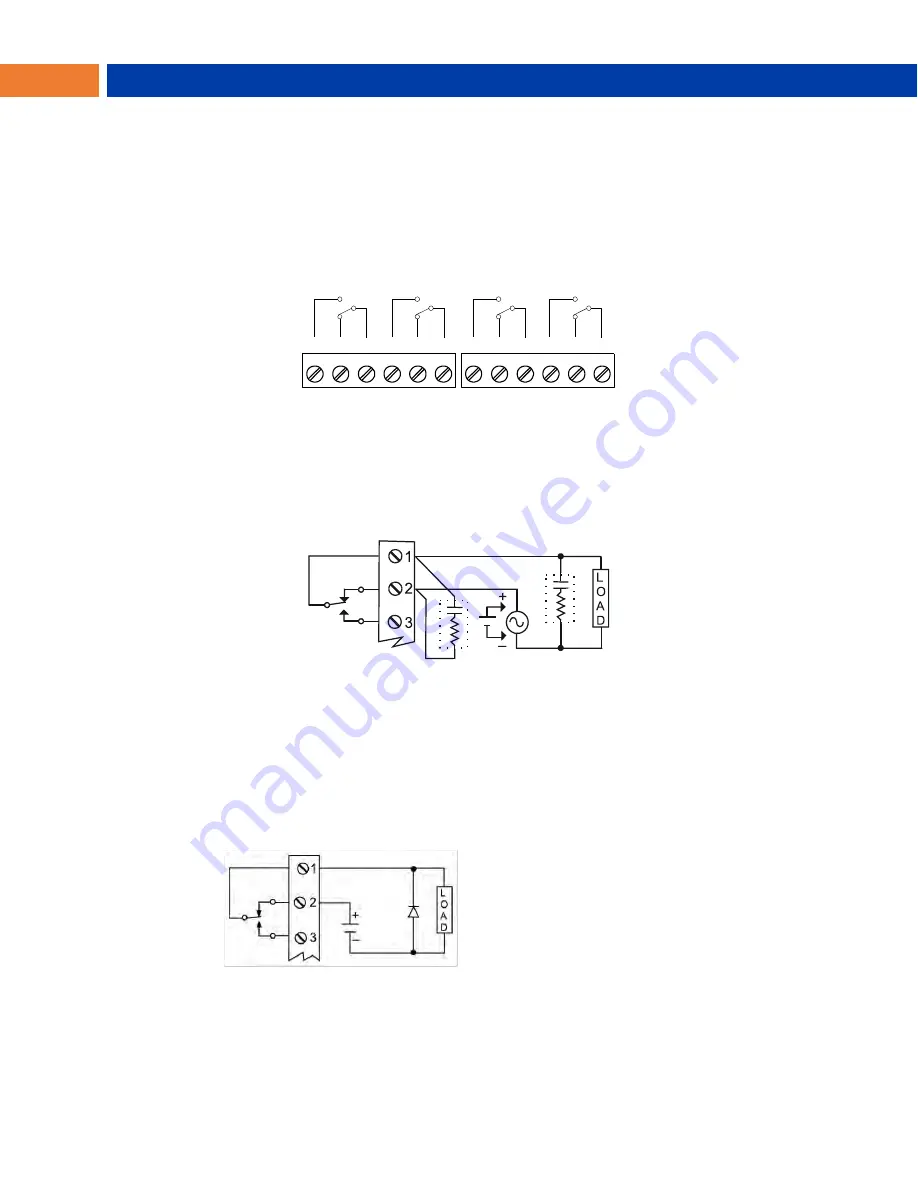
P
RO
V
U
PD6210 Analog Input Batch Controller Instruction Manual
14
Modbus RTU Serial Communications
Serial communications connection is made to an RJ45 connector labeled M-LINK on Figure 7. Use the
PDA1232 for RS-232 interfacing, or the PDA1485 for RS-485 interfacing. The same port is used for
interfacing with all expansion modules (
e.g.
external relays, digital I/O).
Relay Connections
Relay connections are made to two six-terminal connectors labeled RELAY1 – RELAY4 on Figure 7.
Each relay’s C terminal is common only to the normally open (NO) and normally closed (NC) contacts of
the corresponding relay. The relays’ C terminals should not be confused with the COM (common) terminal
of the INPUT SIGNAL connector.
Figure 10: Relay Connections
Switching Inductive Loads
The use of suppressors (snubbers) is strongly recommended when switching inductive loads to prevent
disrupting the microprocessor’s operation. The suppressors also prolong the life of the relay contacts.
Suppression can be obtained with resistor-capacitor (RC) networks assembled by the user or purchased
as complete assemblies. Refer to the following circuits for RC network assembly and installation:
Figure 11: AC and DC Loads Protection
Choose R and C as follows:
R: 0.5 to 1
for each volt across the contacts
C: 0.5 to 1 µF for each amp through closed contacts
Notes:
1. Use capacitors rated for 250 VAC.
2. RC networks may affect load release time of solenoid loads. Check to confirm proper operation.
3.
Install the RC network at the controller's relay screw terminals. An RC network may also be installed
across the load. Experiment for best results.
Figure 12: Low Voltage DC Loads Protection
C
NO
NO
NC
NC
C
RELAY4
RELAY3
4
3
6
5
2
1
C
NO
NO
NC
NC
C
RELAY2
RELAY1
4
3
6
5
2
1
C
R
C
R
Use a diode with a reverse
breakdown voltage two to three
times the circuit voltage and for-
ward current at least as large
as the load current.


